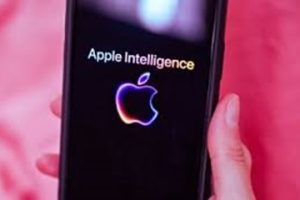
NEC and Cisco are combining their respective expertise in wireless and core networking technologies to deliver an enterprise private 5G solution.

The solution integrates Cisco’s 5G SA Core and Cloud Control Centre with NEC’s validated radio network and systems integration services, creating a market-ready offering for enterprise customers.
The collaboration leverages NEC’s proven experience in wireless networks alongside Cisco’s core network capabilities to implement, maintain, and support private 5G networks. The initial rollout will target enterprise customers in Europe and the Middle East, with plans for global expansion through direct sales and service provider partnerships.
To showcase the technology’s capabilities, NEC has established a demonstration facility and laboratory where potential customers can evaluate the end-to-end solution. The facility enables businesses to validate various use cases supporting digital transformation across multiple sectors, including logistics, warehousing, event venues, and airport operations.
Hideyuki Ogata, Senior Executive Professional at NEC’s Global Network Division, commented: “The needs for modernised architecture in 5G have steadily enhanced our partnership with Cisco, leading us to this next level.
“The industry-leading solutions from Cisco and our ecosystem partners, combined with our world-class network integration capabilities, enable us to deliver compelling solutions to multiple operators and verticals across the world.”
Private 5G networks represent a significant advancement in enterprise connectivity, offering organisations dedicated 5G infrastructure tailored to their specific requirements. This bespoke approach enables enhanced performance and security whilst delivering the inherent benefits of 5G technology, including ultra-low latency for real-time communications and support for massive IoT deployments.
Masum Mir, SVP and GM of Provider Mobility at Cisco, said: “Our collaboration with NEC leverages our combined strengths to bring cutting-edge private 5G solutions to enterprises worldwide.
“Together with NEC, we are creating a powerful force to drive digital transformation and innovation across multiple sectors, and support the critical changes needed in networking infrastructure to carry the internet into the next decade.”
Looking to revamp your digital transformation strategy? Learn more about Digital Transformation Week taking place in Amsterdam, California, and London. The comprehensive event is co-located with AI & Big Data Expo, Cyber Security & Cloud Expo, and other leading events.
Explore other upcoming enterprise technology events and webinars powered by TechForge here.
GSMA: Mobile internet remains inaccessible for 3.45B people

The organisation’s latest ‘State of Mobile Internet Connectivity 2024’ report highlights that, while mobile internet adoption continues to grow annually, the pace has significantly slowed. Last year saw 160 million new users coming online, matching 2022’s figures but falling short of the 200+ million annual growth witnessed between 2015 and 2021.
The study – funded by the UK Foreign, Commonwealth and Development Office (FCDO) and the Swedish International Development Cooperation Agency (Sida) – identifies crucial gaps in global connectivity and highlights the pressing need for collaborative action.
Currently, 4.6 billion people (57% of the global population) use mobile internet on their personal devices. However, a concerning 350 million people remain without any mobile internet coverage, predominantly in remote areas. More critically, 3.1 billion people have coverage but don’t use it—a “usage gap” nine times larger than the coverage gap.
Sub-Saharan Africa emerges as the least connected region globally, with only 27% of its population using mobile internet services. The region faces a 13% coverage gap and a substantial 60% usage gap.
The economic implications are significant. Bringing the unconnected online could contribute an estimated £3.5 trillion to the global economy between 2023-2030, with 90% of this impact benefitting low- and middle-income countries (LMICs).
Device affordability remains a major hurdle in LMICs, where entry-level internet-enabled devices cost 18% of average monthly income, rising to 51% for the poorest fifth of the population. The situation is particularly dire in Sub-Saharan Africa, where the poorest 20% would need to spend 99% of their monthly income on such devices.
“While progress continues to be made in improving infrastructure and in increasing mobile internet adoption, significant digital divides exist,” said John Giusti, Chief Regulatory Officer at the GSMA.
Digital skills and literacy represent another significant barrier, particularly in Asian countries. Additional challenges include limited access to relevant localised content, security concerns, and inadequate infrastructure such as electricity.
Even among current mobile internet users, usage patterns reveal limited engagement. An average of 43% of users in surveyed countries expressed desire to use mobile internet more extensively, but face constraints including security concerns and affordability issues.
The report emphasizes the urgent need for collaboration between governments, mobile operators, and international organisations to address these barriers and ensure meaningful connectivity for all.
Source: Telecomstech



















